Foreword / YouTube Video Review
I purchased these speakers with my own money using funds from Patreon and otherwise donated by viewers such as yourself.
The review on this website is a brief overview and summary of the objective performance of this speaker. It is not intended to be a deep dive. Moreso, this is information for those who prefer “just the facts” and prefer to have the data without the filler. The video below has more discussion.
Information and Photos
Specs from the manufacturer can be found here.
- Frequency Response: 44-25kHz +/- 3dB:
- Sensitivity: 94.5dB @ 2.83V / 1m:
- Power Handling (Cont/Peak): 100W / 400W:
- Nominal Impedance: 8 Ohms Compatible:
- Crossover Frequency: 1500Hz:
- High Frequency Driver: 1" Titanium LTS Vented Tweeter with Hybrid Cross-Section Expanded Tractrix® Horn:
- Low Frequency Driver: 6.5” Cerametallic Cone Woofers with Faraday rings:
- Enclosure Material: MDF (Internally Braced):
- Enclosure Type: Bass Reflex via rear-firing Tractrix® Ports:
- Inputs: Dual aluminum binding posts / bi-wire / bi-amp:
- Height: 15.75" (40.0 cm):
- Width: 7.95" (20.2 cm):
- Depth: 13.00" (33.0 cm):
- Weight: 18.1 lb (8.2 kg):
- Finish: Ebony, Walnut:
The current price is approximately $769 USD per pair.
CTA-2034 (SPINORAMA) and Accompanying Data
All data collected using Klippel’s Near-Field Scanner. The Near-Field-Scanner 3D (NFS) offers a fully automated acoustic measurement of direct sound radiated from the source under test. The radiated sound is determined in any desired distance and angle in the 3D space outside the scanning surface. Directivity, sound power, SPL response and many more key figures are obtained for any kind of loudspeaker and audio system in near field applications (e.g. studio monitors, mobile devices) as well as far field applications (e.g. professional audio systems). Utilizing a minimum of measurement points, a comprehensive data set is generated containing the loudspeaker’s high resolution, free field sound radiation in the near and far field. For a detailed explanation of how the NFS works and the science behind it, please watch the below discussion with designer Christian Bellmann:
The reference plane in this test is at the tweeter. I tested the speaker primarily with the grille off.
I did perform additional testing (grille on) and have also provided some data for the effect of turning the speaker off-axis in the Estimated In-Room Response. Additionally, I have provided some overlays of the Estimated In-Room Response of various kinds toward the end of this review. Please read the graphic titles of each for identifying what the data is for.
Measurements are provided in a format in accordance with the Standard Method of Measurement for In-Home Loudspeakers (ANSI/CTA-2034-A R-2020). For more information, please see this link.
CTA-2034 / SPINORAMA:
The On-axis Frequency Response (0°) is the universal starting point and in many situations it is a fair representation of the first sound to arrive at a listener’s ears.
The Listening Window is a spatial average of the nine amplitude responses in the ±10º vertical and ±30º horizontal angular range. This encompasses those listeners who sit within a typical home theater audience, as well as those who disregard the normal rules when listening alone.
The Early Reflections curve is an estimate of all single-bounce, first-reflections, in a typical listening room.
Sound Power represents all of the sounds arriving at the listening position after any number of reflections from any direction. It is the weighted rms average of all 70 measurements, with individual measurements weighted according to the portion of the spherical surface that they represent.
Sound Power Directivity Index (SPDI): In this standard the SPDI is defined as the difference between the listening window curve and the sound power curve.
Early Reflections Directivity Index (EPDI): is defined as the difference between the listening window curve and the early reflections curve. In small rooms, early reflections figure prominently in what is measured and heard in the room so this curve may provide insights into potential sound quality.

Early Reflections Breakout:
Floor bounce: average of 20º, 30º, 40º down
Ceiling bounce: average of 40º, 50º, 60º up
Front wall bounce: average of 0º, ± 10º, ± 20º, ± 30º horizontal
Side wall bounces: average of ± 40º, ± 50º, ± 60º, ± 70º, ± 80º horizontal
Rear wall bounces: average of 180º, ± 90º horizontal
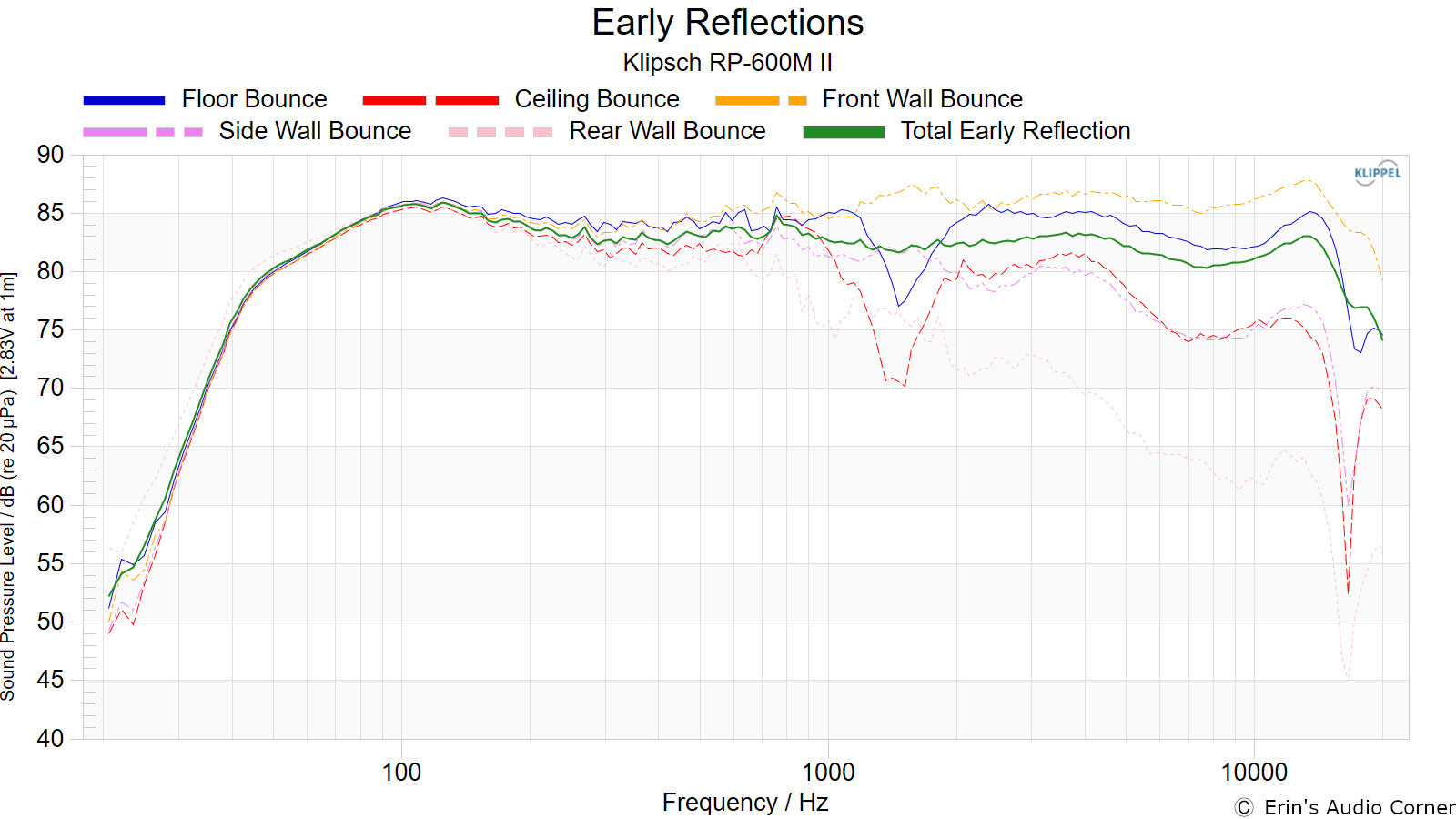
Estimated In-Room Response:
In theory, with complete 360-degree anechoic data on a loudspeaker and sufficient acoustical and geometrical data on the listening room and its layout it would be possible to estimate with good precision what would be measured by an omnidirectional microphone located in the listening area of that room. By making some simplifying assumptions about the listening space, the data set described above permits a usefully accurate preview of how a given loudspeaker might perform in a typical domestic listening room. Obviously, there are no guarantees, because individual rooms can be acoustically aberrant. Sometimes rooms are excessively reflective (“live”) as happens in certain hot, humid climates, with certain styles of interior décor and in under-furnished rooms. Sometimes rooms are excessively “dead” as in other styles of décor and in some custom home theaters where acoustical treatment has been used excessively. This form of post processing is offered only as an estimate of what might happen in a domestic living space with carpet on the floor and a “normal” amount of seating, drapes and cabinetry.
For these limited circumstances it has been found that a usefully accurate Predicted In-Room (PIR) amplitude response, also known as a “room curve” is obtained by a weighted average consisting of 12 % listening window, 44 % early reflections and 44 % sound power. At very high frequencies errors can creep in because of excessive absorption, microphone directivity, and room geometry. These discrepancies are not considered to be of great importance.

Horizontal Frequency Response (0° to ±90°):

Vertical Frequency Response (0° to ±40°):

Horizontal Contour Plot (normalized):
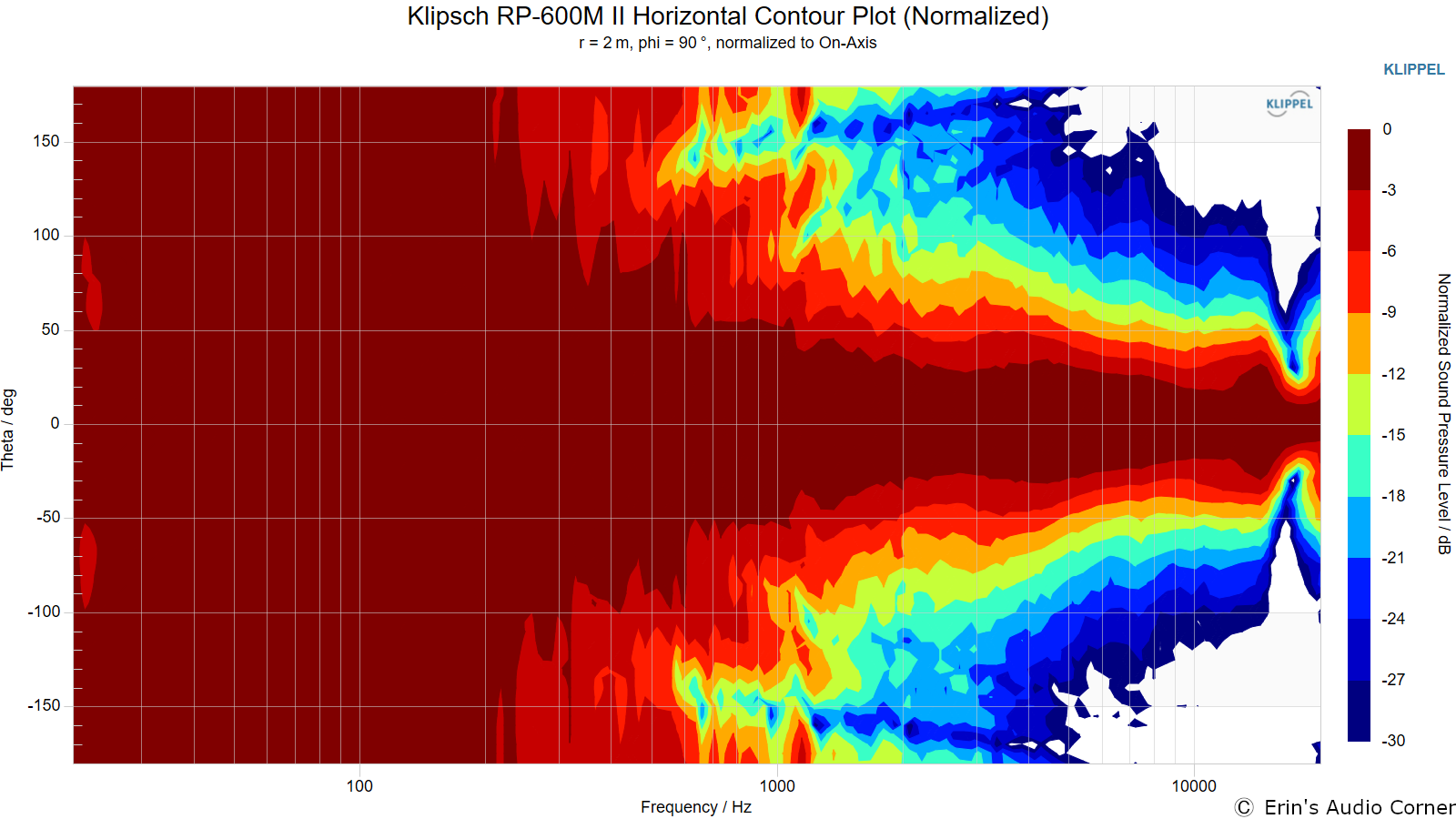
Vertical Contour Plot (normalized):
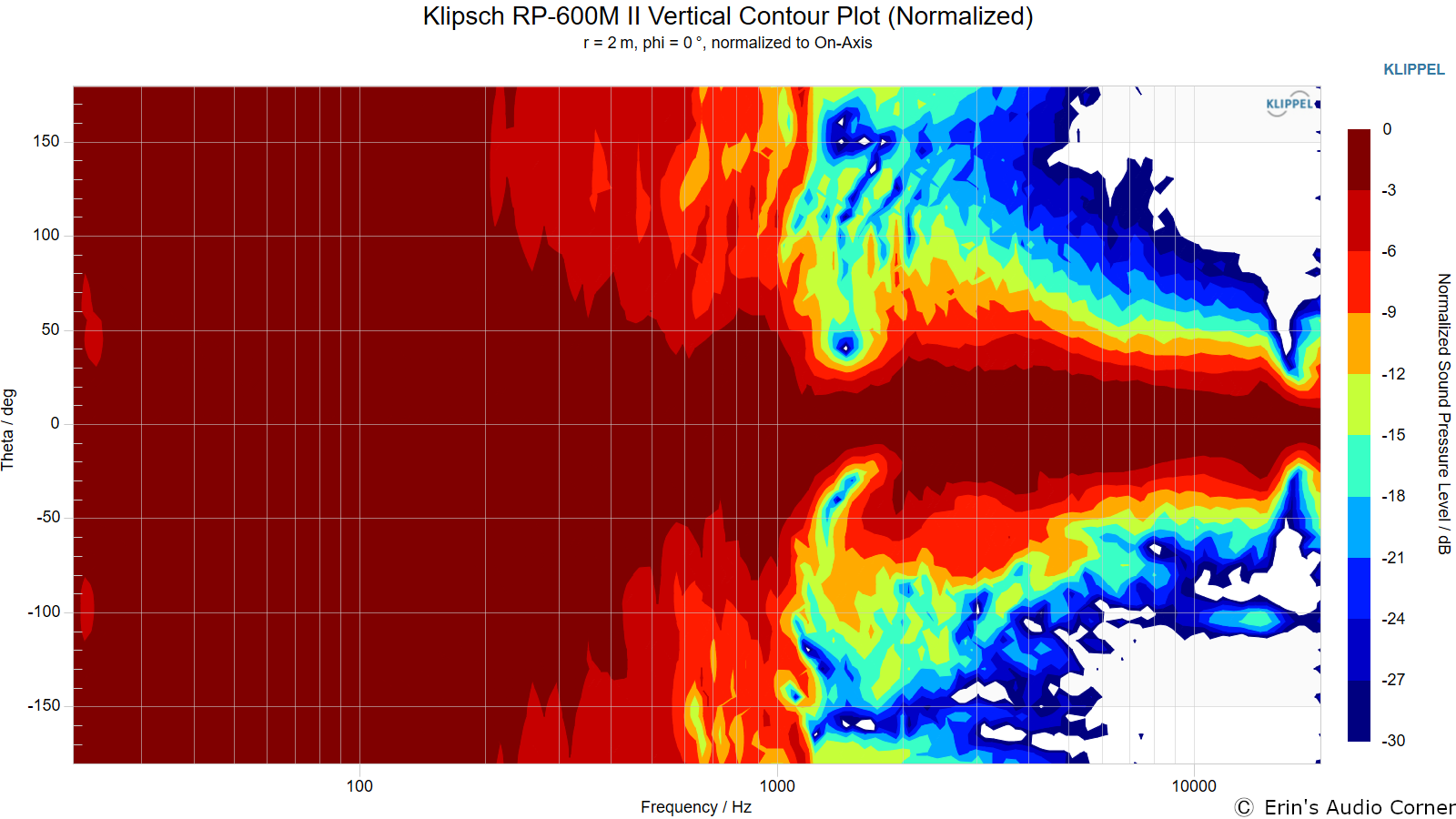
“Globe” Plots
Horizontal Polar (Globe) Plot:
This represents the sound field at 2 meters - above 200Hz - per the legend in the upper left.
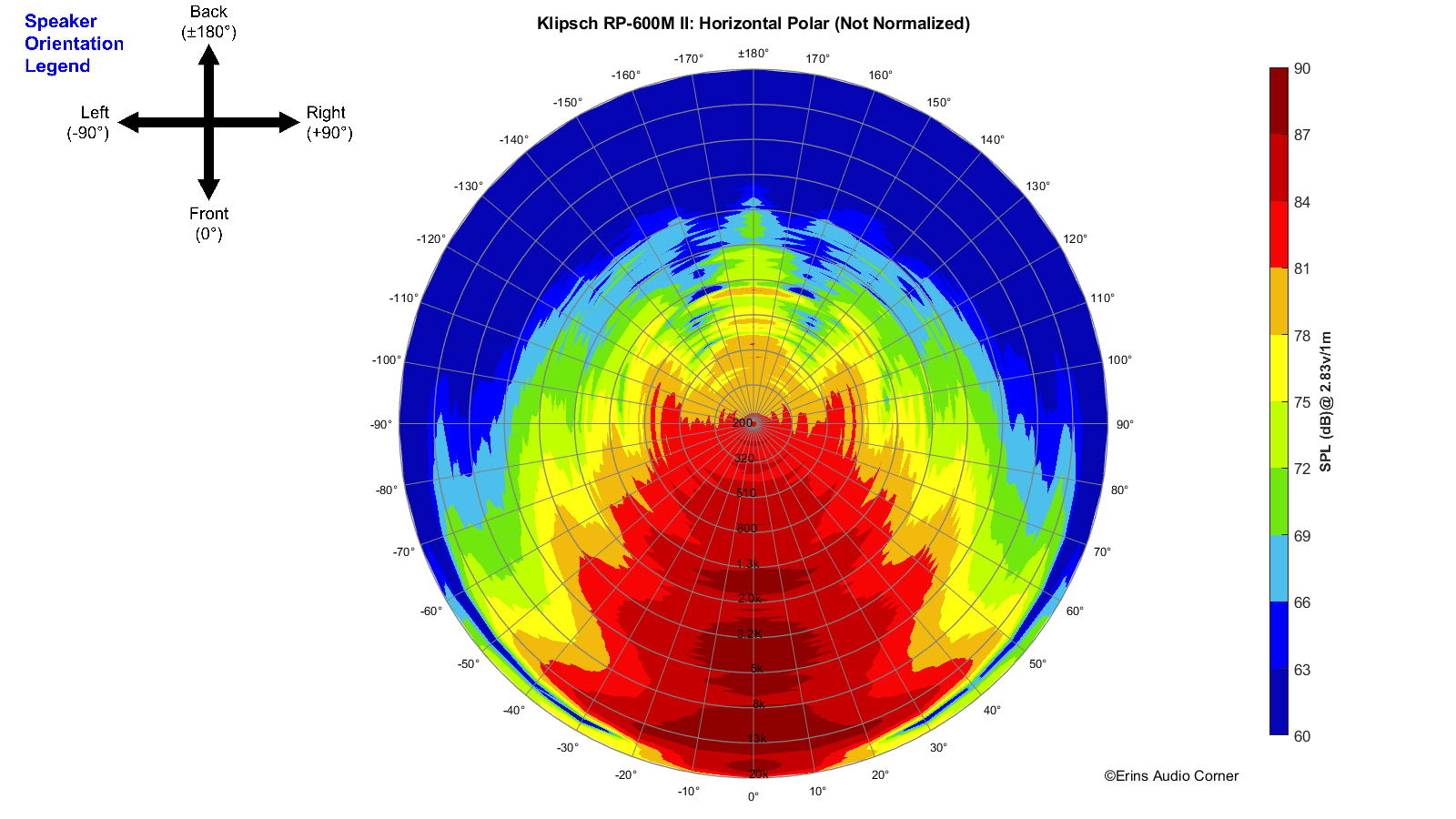
Vertical Polar (Globe) Plot:
This represents the sound field at 2 meters - above 200Hz - per the legend in the upper left.
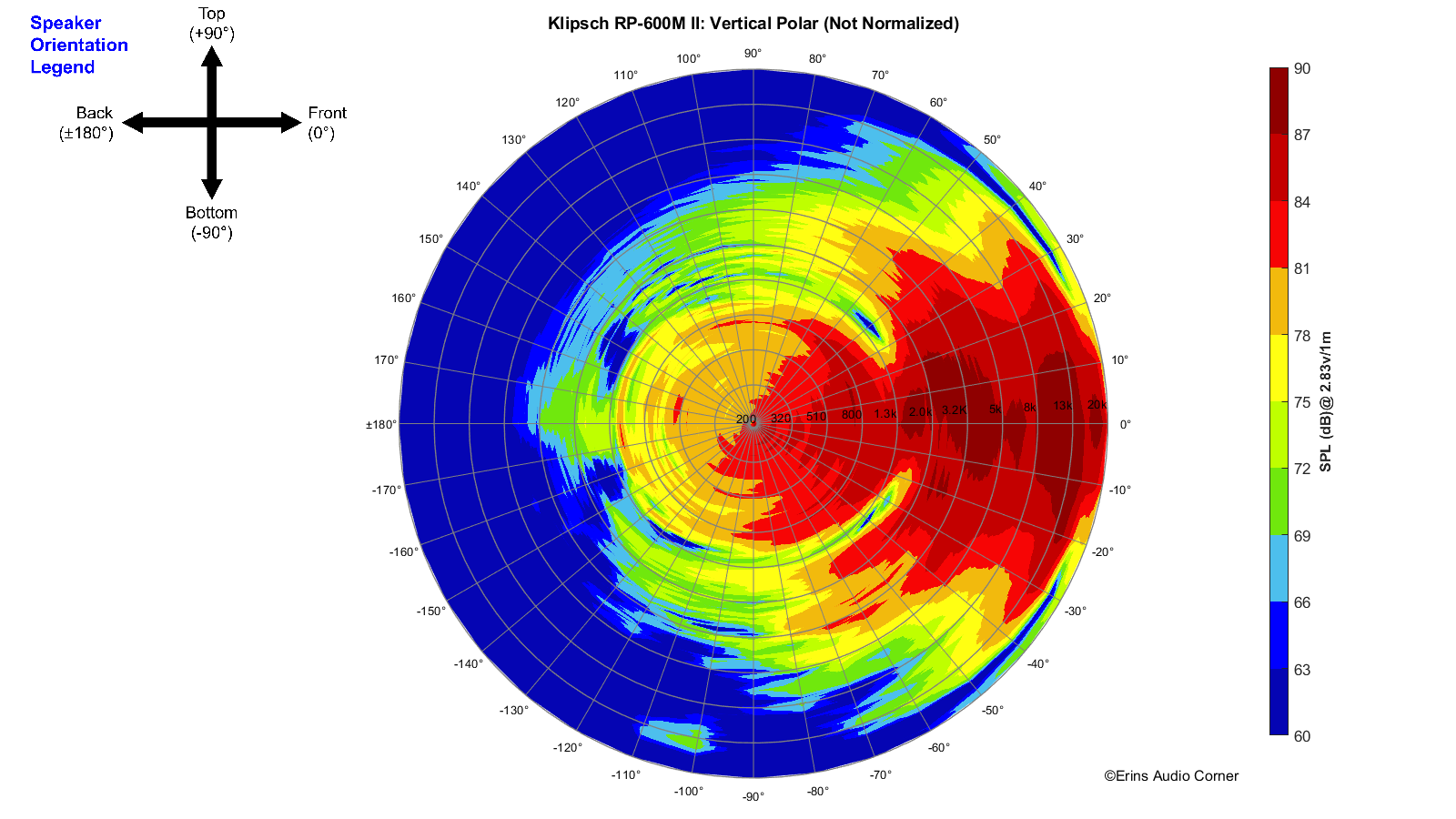
Additional Measurements
Response Linearity
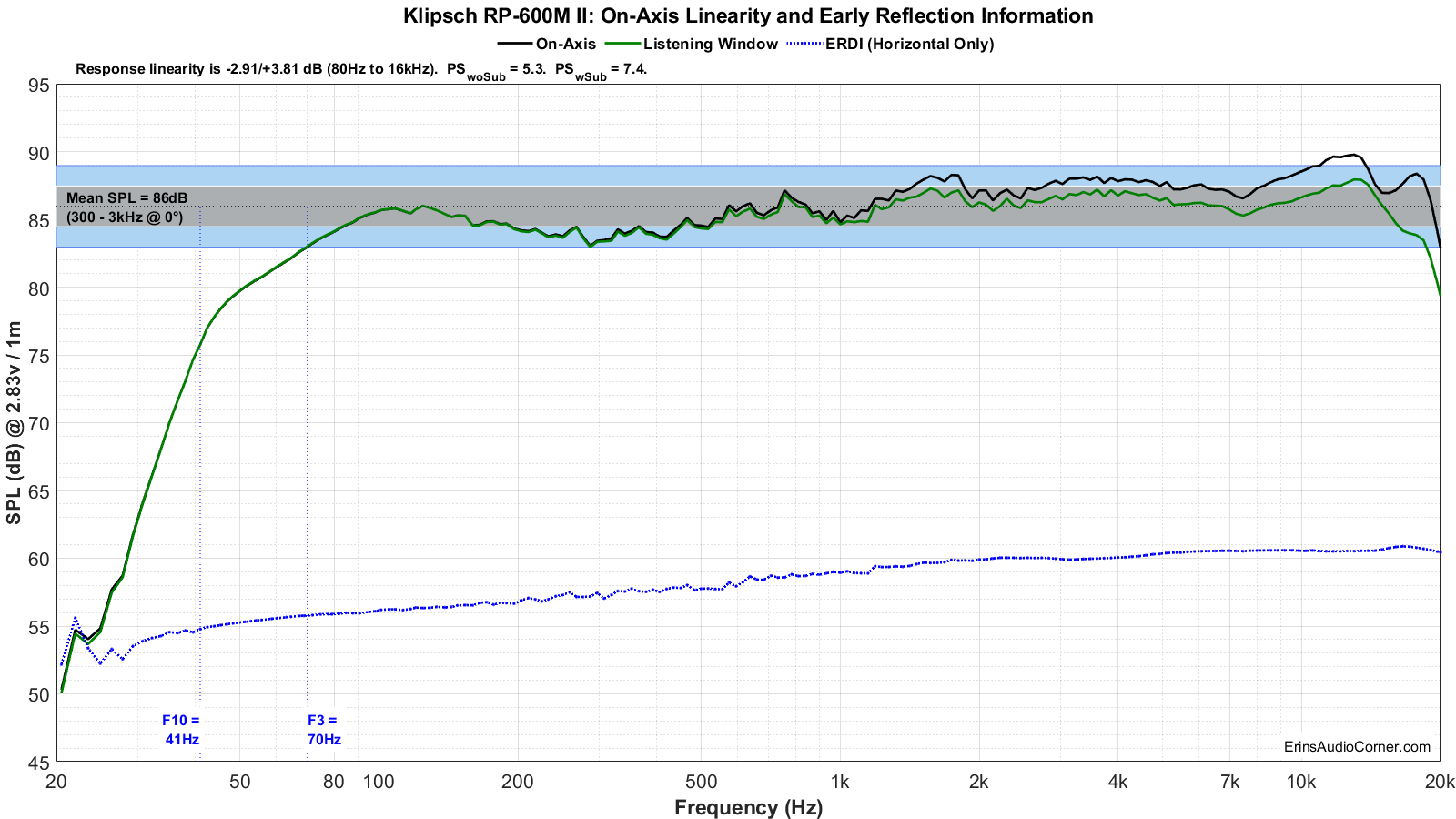
Impedance Magnitude and Phase
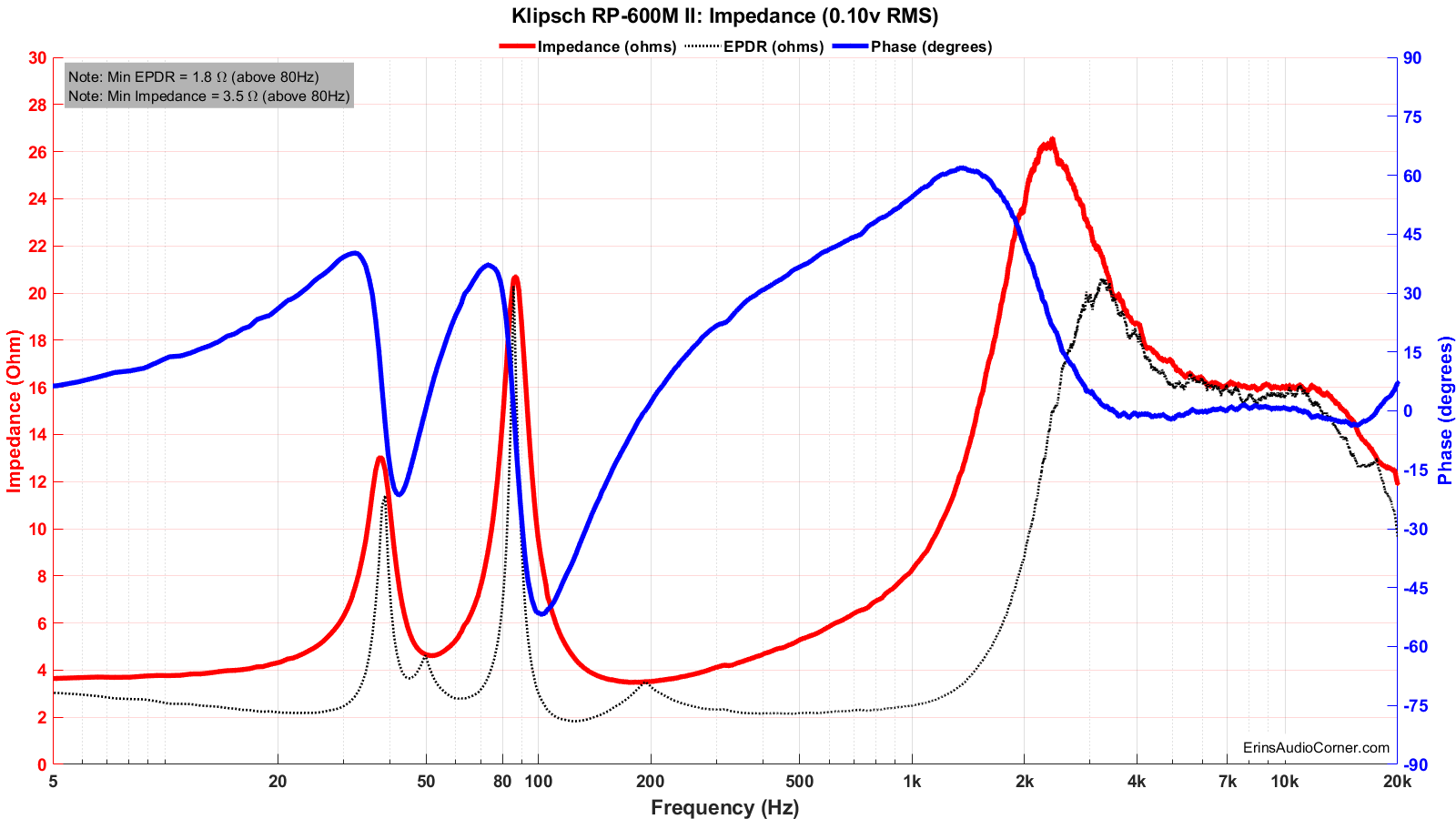
Step Response
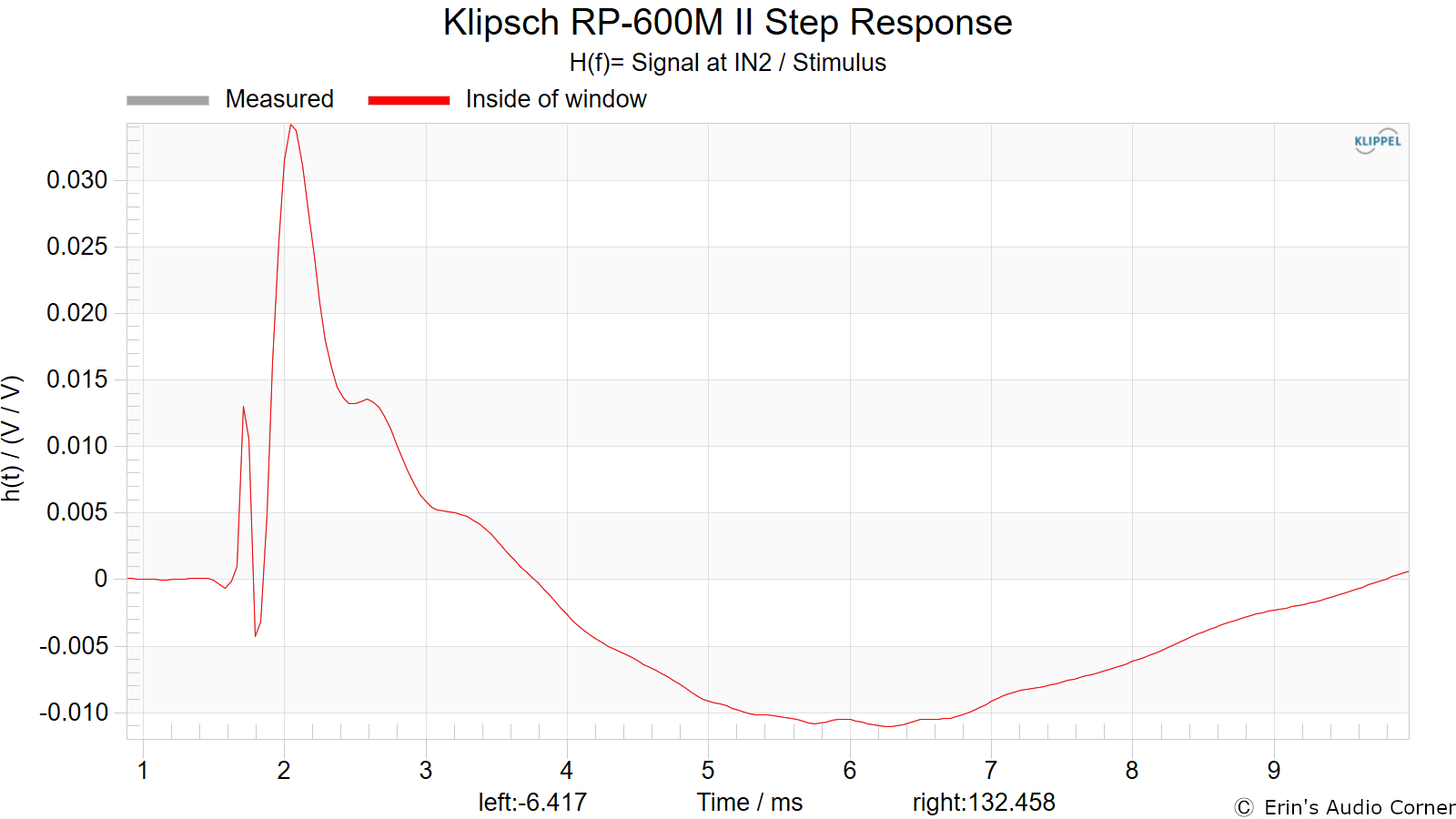
Group Delay

Harmonic Distortion
Harmonic Distortion at 86dB @ 1m:
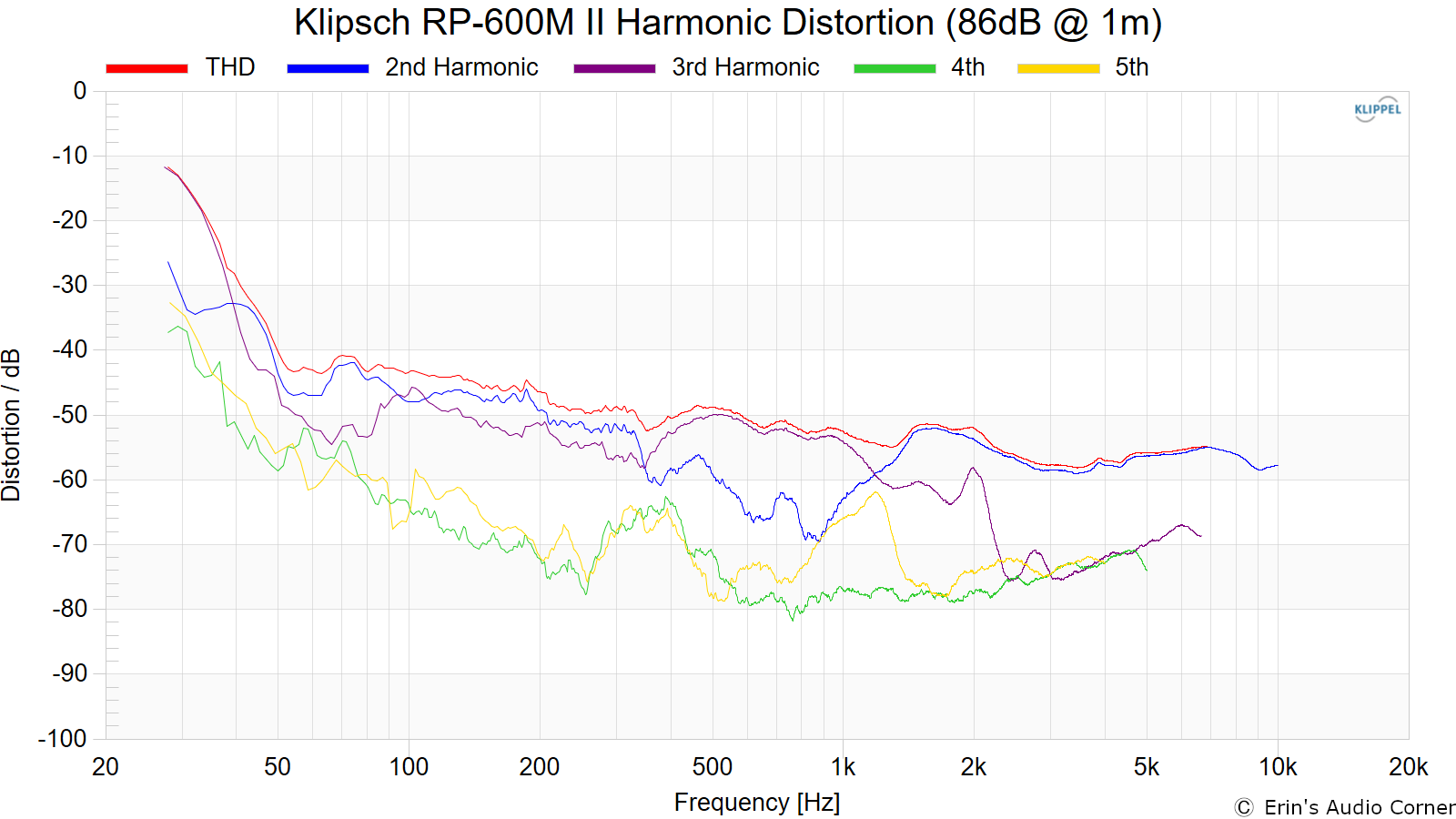
Harmonic Distortion at 96dB @ 1m:
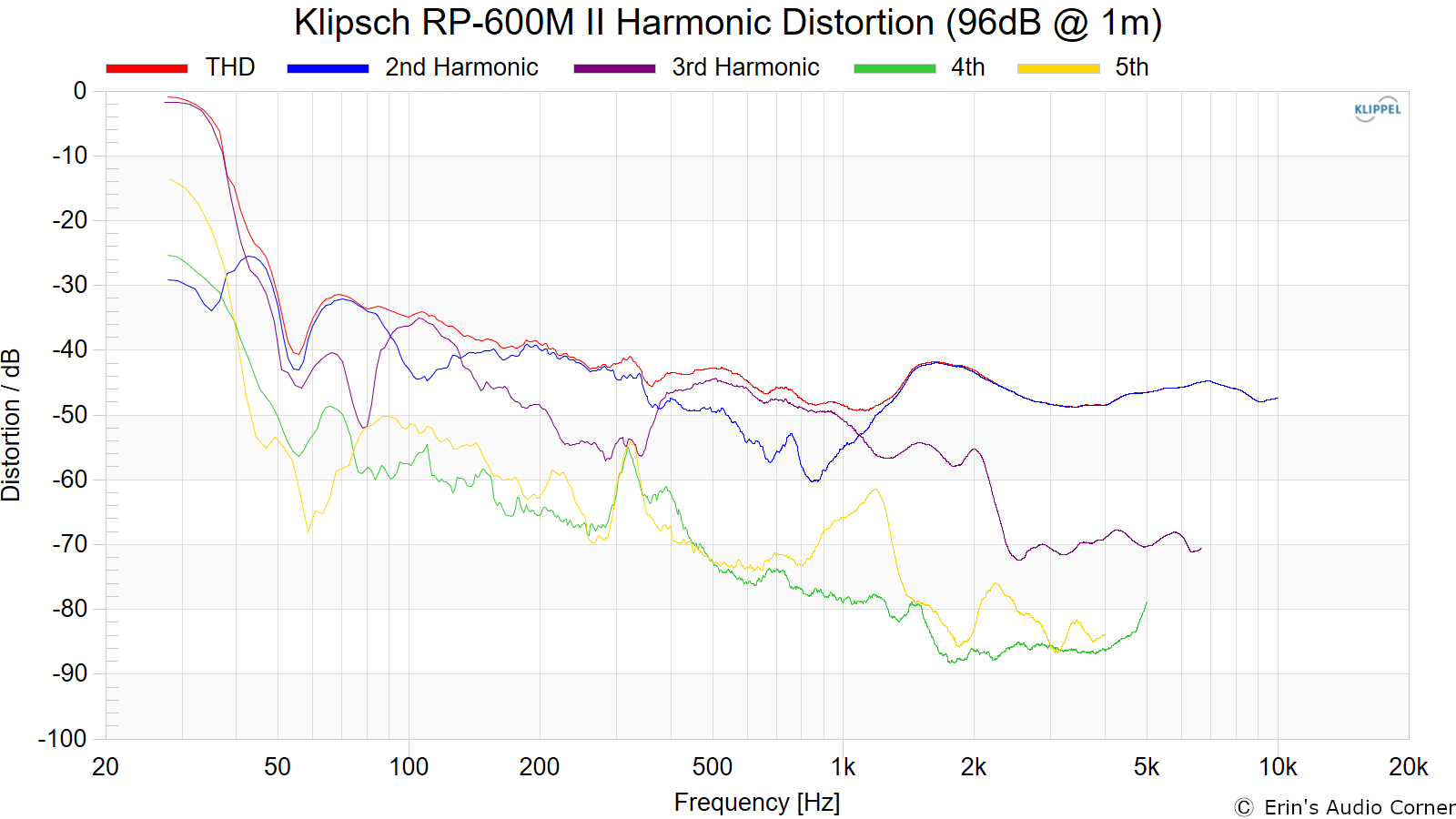
Dynamic Range (Instantaneous Compression Test)
The below graphic indicates just how much SPL is lost (compression) or gained (enhancement; usually due to distortion) when the speaker is played at higher output volumes instantly via a 2.7 second logarithmic sine sweep referenced to 76dB at 1 meter. The signals are played consecutively without any additional stimulus applied. Then normalized against the 76dB result.
The tests are conducted in this fashion:
- 76dB at 1 meter (baseline; black)
- 86dB at 1 meter (red)
- 96dB at 1 meter (blue)
- 102dB at 1 meter (purple)
The purpose of this test is to illustrate how much (if at all) the output changes as a speaker’s components temperature increases (i.e., voice coils, crossover components) instantaneously.

Additional Data
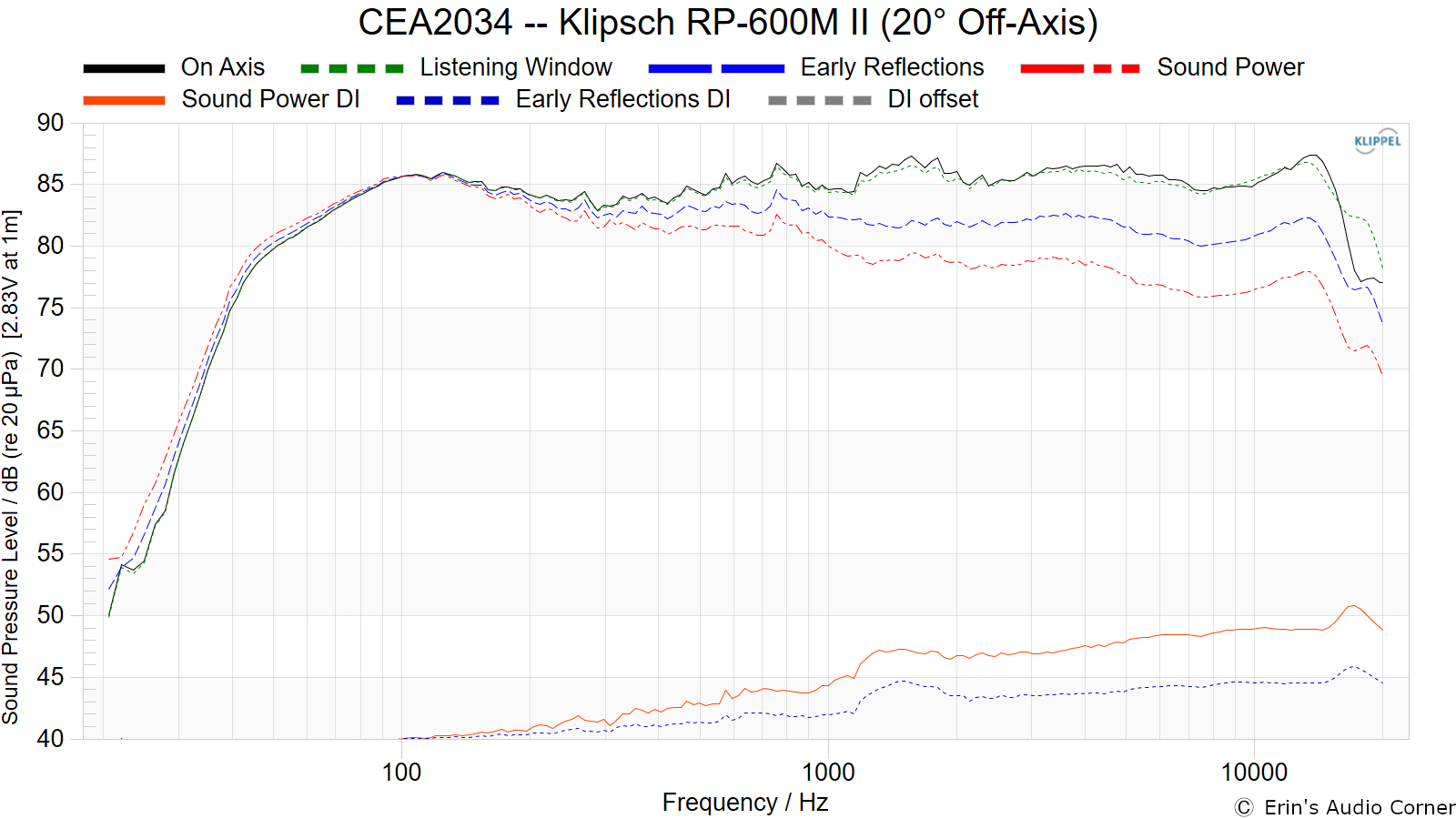
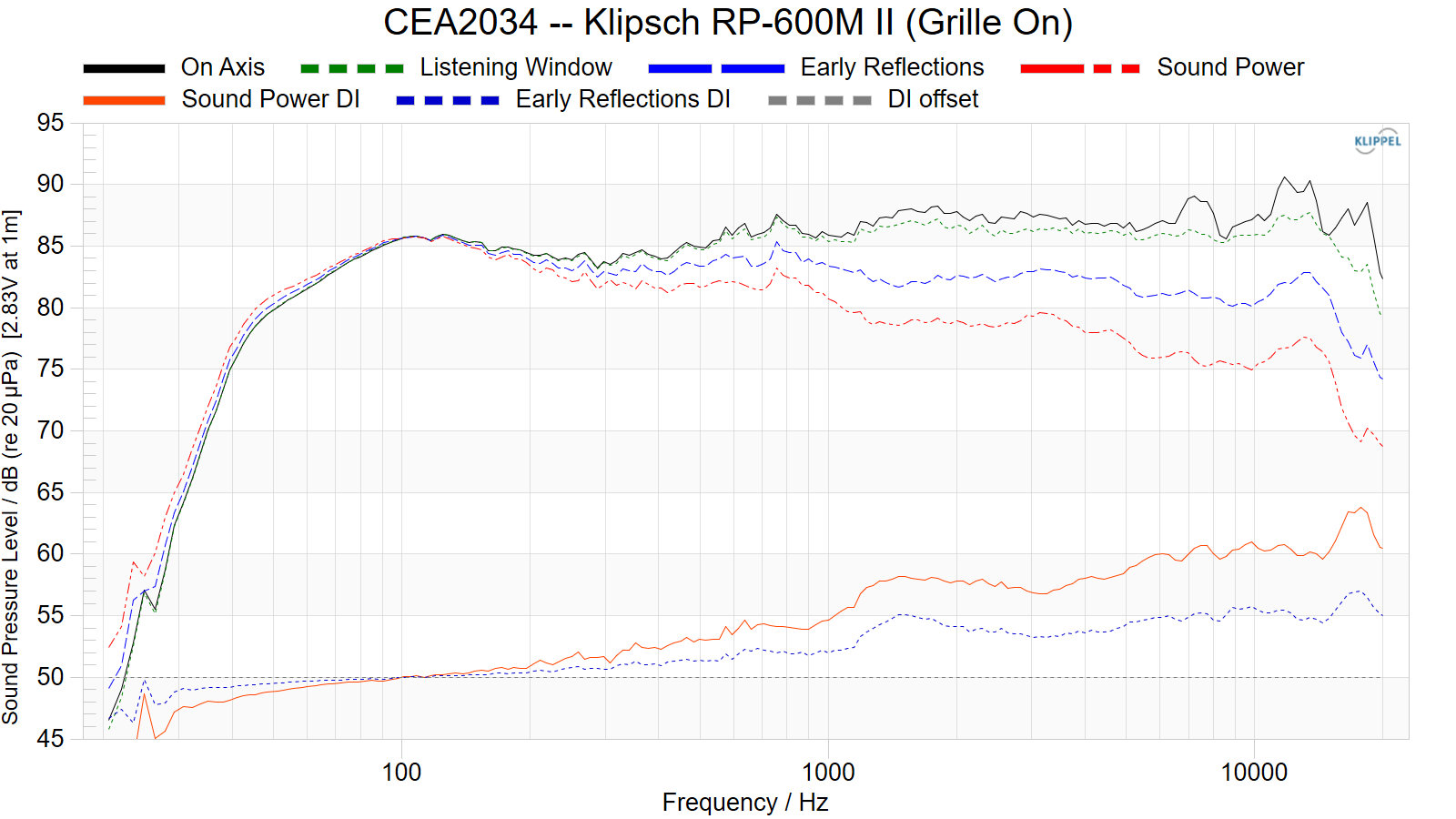

EIR: Versus RP-600M (v1)

EIR: Versus RP-500M II

With EQ
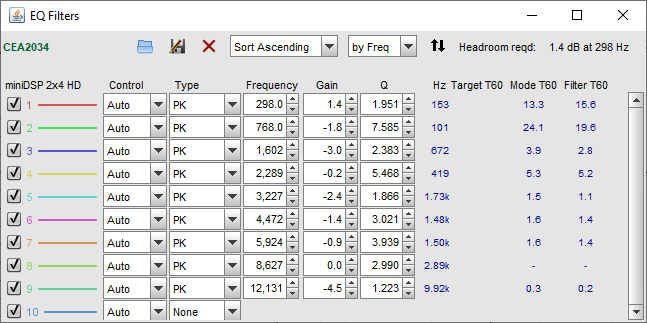


Parting / Random Thoughts
As stated in the Foreword, this written review is purposely a cliff’s notes version. No order; just some random notes from my listening. For details about the performance (objectively and subjectively) please watch the YouTube video. But a few notes:
- Good directivity horizontally, but the vertical directivity could use some work.
- One of the more neutral Klipsch speakers I’ve listened to and the data shows reasonable linearity. However, there is a treble boost starting around 8kHz.
- I recommend turning the speaker about 20° out (facing out into the room) or using the speaker grille to help lower the high frequency tilt a bit.
- The sensitivity is 86dB @ 2.83v/1m, despite Klipsch rating this speaker at 94.5dB (using in-room, half-space conditions).
- Really good balance of precision of instruments/vocalists in the soundstage while still having good horizontal dispersion (±50° to ±60°).
- Compared to the v1 (which I reviewed [here]), the v2 has smoother response, is about 10° to 20° wider in horizontal dispersion and only has a slightly poorer horizontal directivity.
Support the Cause
If you find this review helpful and want to help support the cause there are a few ways you can do so below. Your support helps me pay for new items to test, hardware, miscellaneous items needed for testing and costs of the site’s server space and bandwidth. Any help is very much appreciated.
Join my Patreon: Become a Patron!
Or using my product affiliate link below to buy this speaker or anything they sell that you want to try out. This will earn me a small commission at no additional cost to you. You can use these links anytime; now or in the future.
You can also join my Facebook and YouTube pages if you’d like to follow along with updates.